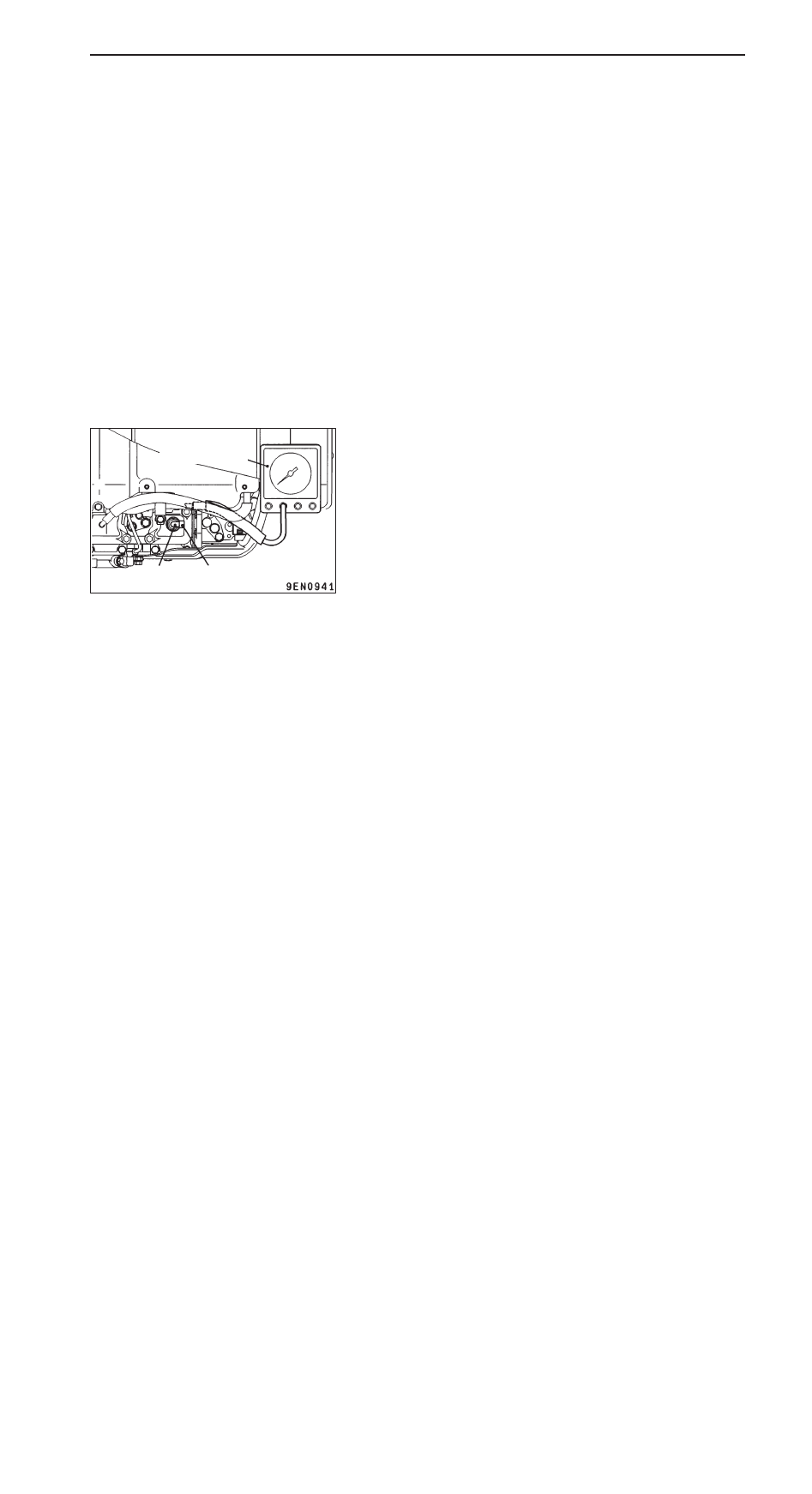Mitsubishi Pajero Pinin. Manual - part 13

ENGINE <4G9-GDI> –
On-vehicle Service
11A-12
7.
Measure the compression pressure for all the cylinders,
and check that the pressure differences of the cylinders are
below the limit.
Limit: Max. 100 kPa
8.
If there is a cylinder with compression or a compression
difference that is outside the limit, pour a small amount
of engine oil through the spark plug hole, and repeat the
operations in steps 6 and 7.
(1) If the compression increases after oil is added, the
cause of the malfunction is a worn or damaged piston
ring and/or cylinder inner surface.
(2) If the compression does not rise after oil is added,
the cause is a burnt or defective valve seat, or pressure
is leaking from the gasket.
9.
Connect the crank angle sensor connector.
10. Install the spark plugs and ignition coils.
11. Use the MUT-
II
to erase the diagnosis codes.
NOTE
This will erase the diagnosis code resulting from the crank
angle sensor connector being disconnected.
MANIFOLD VACUUM CHECK
1.
Before inspection, set the vehicle to the pre-inspection
condition.
2.
Turn off the ignition switch.
3.
Connect the engine tachometer or connect the MUT-
II
to the diagnosis connector.
4.
Disconnect the ventilation hose from the positive crankcase
ventilation (PCV) valve, and then connect a vacuum gauge
to the ventilation hose. Plug the positive crankcase
ventilation (PCV) valve.
5.
Start the engine and run it at idle for 4 minutes or more,
and then check the intake manifold vacuum while the
engine is idling.
Limit: Min. 60 kPa
6.
Turn off the ignition switch.
7.
Remove the vacuum gauge, and then connect the
ventilation hose to the positive crankcase ventilation (PCV)
valve.
8.
Remove the engine tachometer or the MUT-
II.
Vacuum gauge
Plug
Positive crankcase
ventilation (PCV) valve